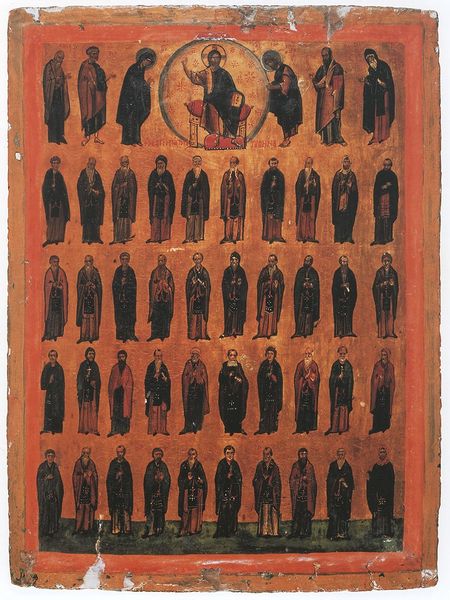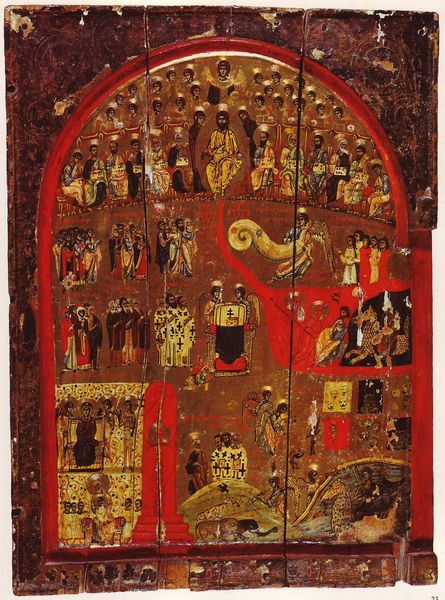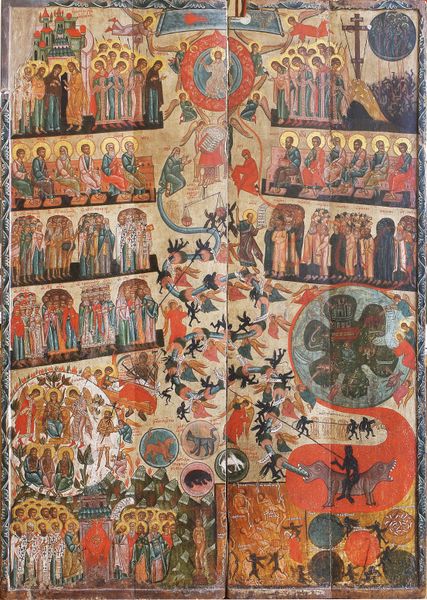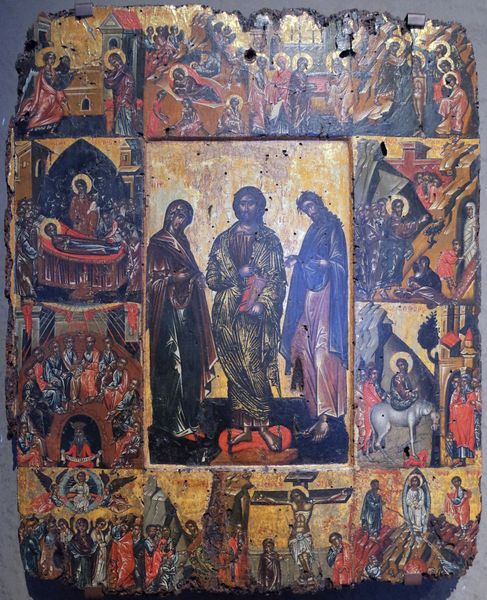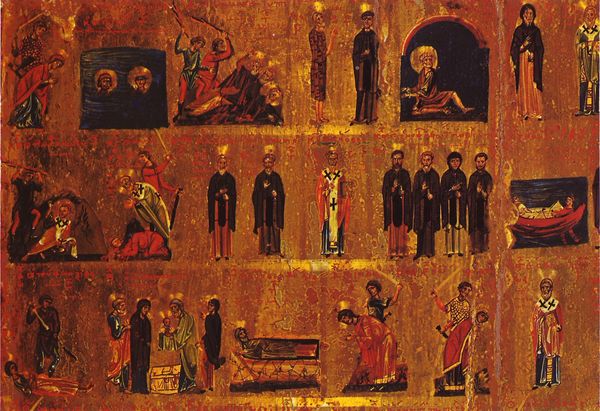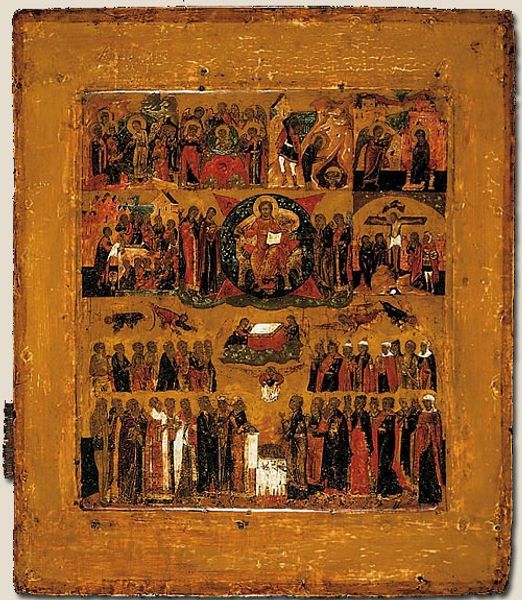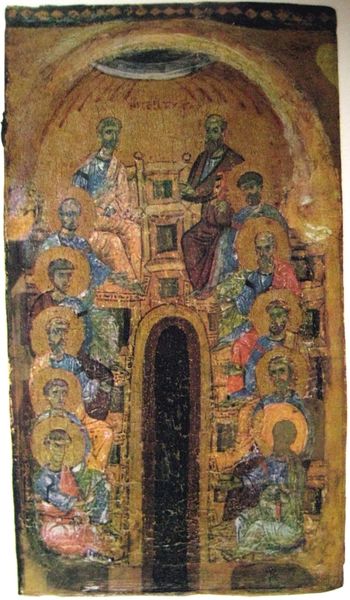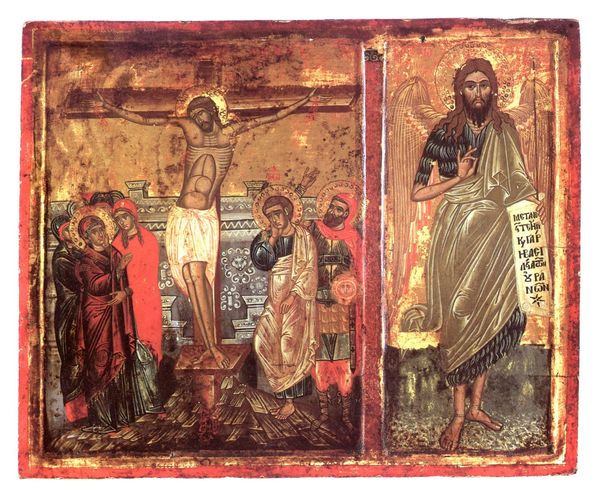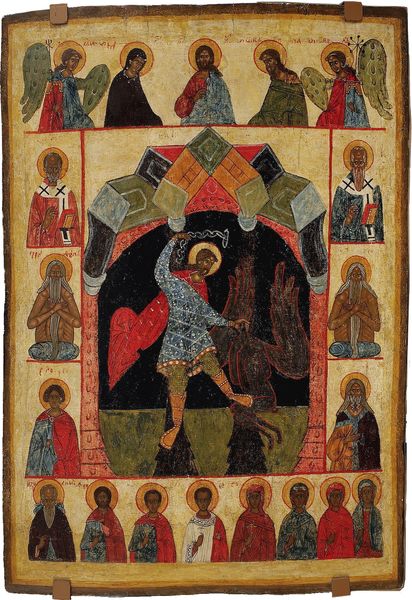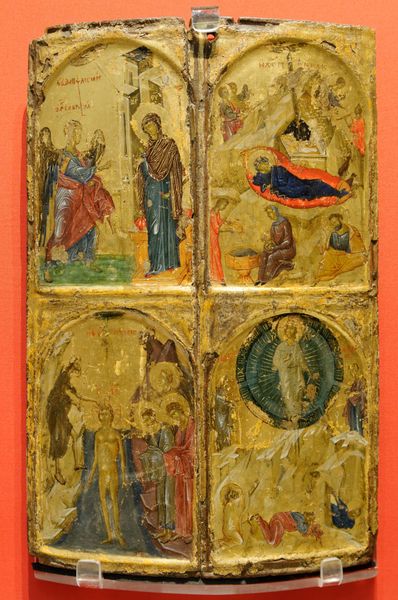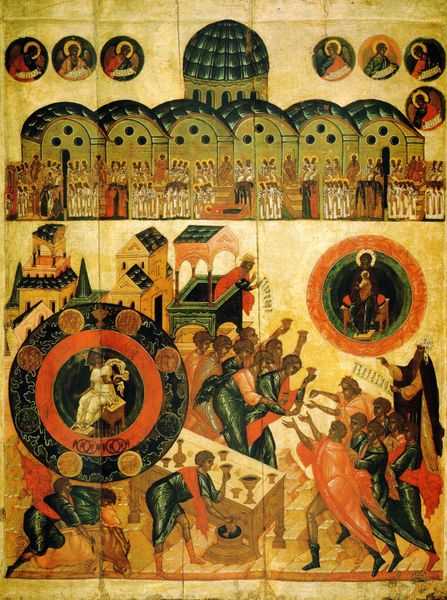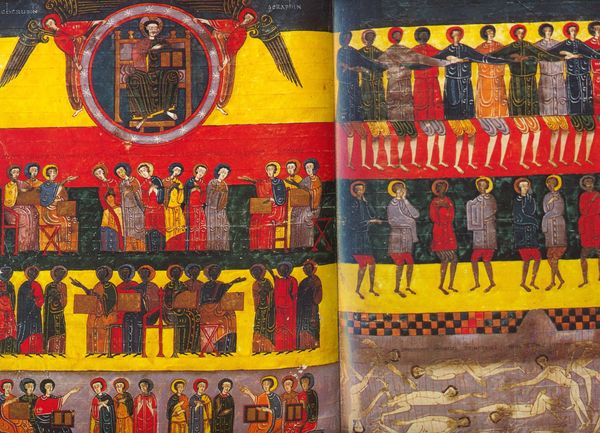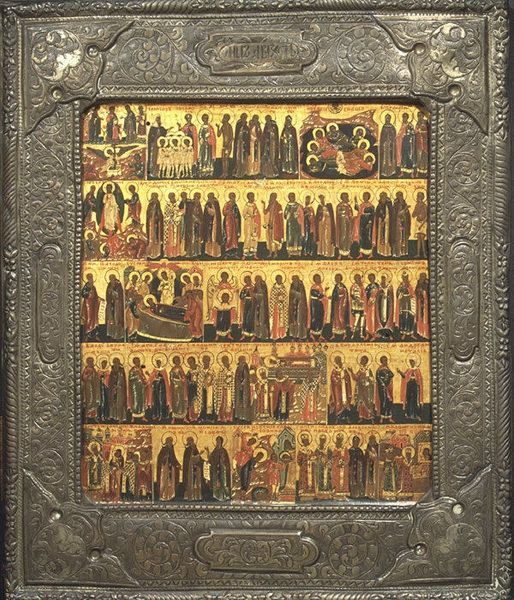
panel, tempera, painting
#
byzantine-art
#
panel
#
narrative-art
#
tempera
#
painting
#
figuration
#
oil painting
#
history-painting
Copyright: Orthodox Icons,Fair Use
Curator: Here we have a tempera on panel from around 1600 titled "Passion of Christ." It's currently held here at the National Art Museum of Ukraine in Kyiv. Editor: My initial impression is one of a dense tapestry, but instead of thread, it's composed of myriad stories. It’s quite small, no? The artist captures so much within a limited space. The color palette leans heavily on earth tones, making it appear ancient, even fragile. Curator: Indeed. This piece fits within the broader tradition of Byzantine iconography, demonstrating how artistic styles travelled and were adapted across different cultural and geographical contexts. The multitude of panels narrates sequentially, much like a comic strip, the events leading to Christ's crucifixion. It’s interesting how it merges the spiritual and narrative, meant to instruct the faithful. Editor: Absolutely, the choice of Byzantine art is crucial to note, given the cultural context of Ukraine at the time. How was this type of art utilized to reinforce societal norms, given it illustrates one of the most foundational narratives of Christian identity? And for whom was this constructed? Given the choice of style and content, it couldn't possibly target a wider audience, surely? Curator: The rigid forms and the flatness are conventions tied to religious iconography aimed more at veneration than realistic representation. As to who consumed these kinds of artworks - obviously Orthodox communities were at the centre. Editor: I also find it curious to analyze the symbolic language deployed here. The use of halos, the specific gestures of the figures - all carry deep theological weight. I think unpacking these elements offers layers of insight into the values and beliefs the artist or the community who requested it intended to portray and, perhaps even, uphold, politically. Curator: Absolutely. Studying “Passion of Christ” gives a vital lens to view not just art history but European history at large, showcasing that any imagery participates in larger social constructs. Editor: And through those constructs we can gain insight into their original consumers to more accurately perceive this piece and contextualize its original intent! Well, I for one certainly gained a deeper understanding and perspective about its cultural implications! Curator: And with that, we must take our leave and leave space for more observation!
Comments
No comments
Be the first to comment and join the conversation on the ultimate creative platform.
